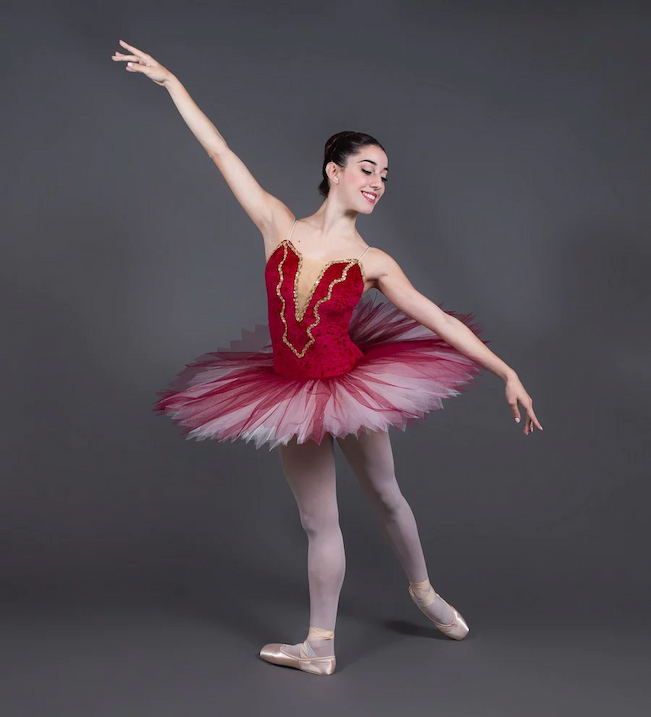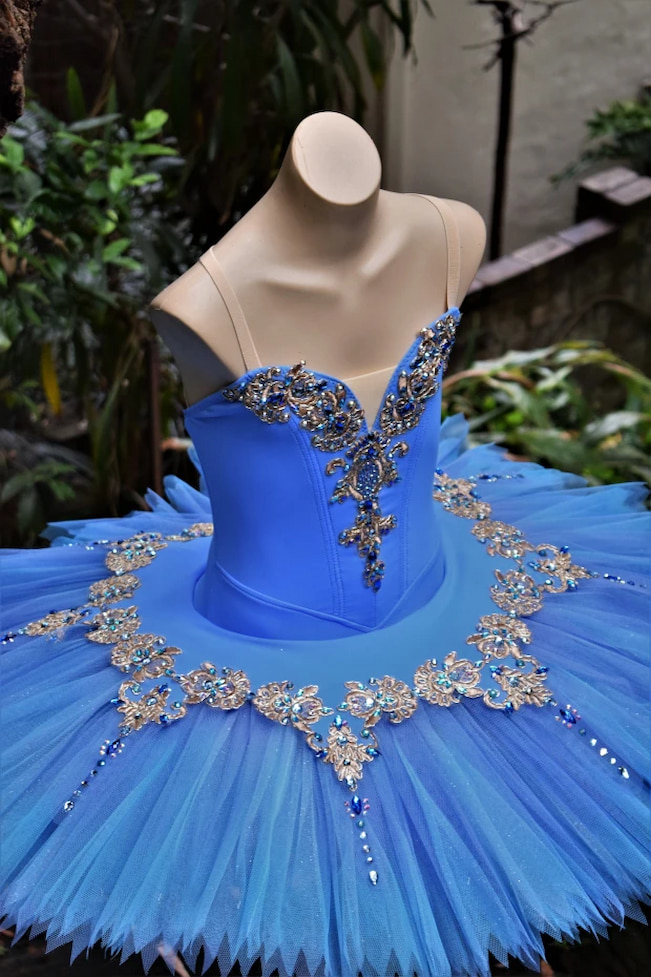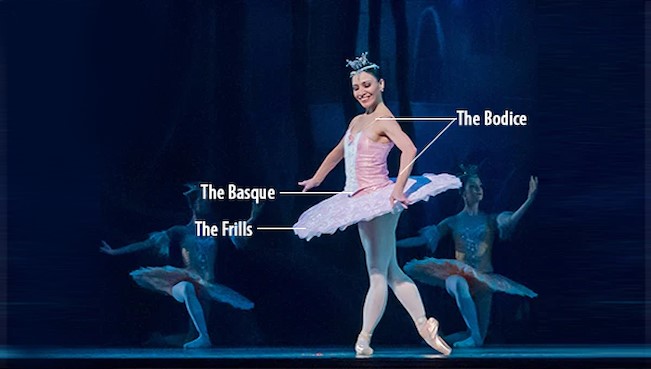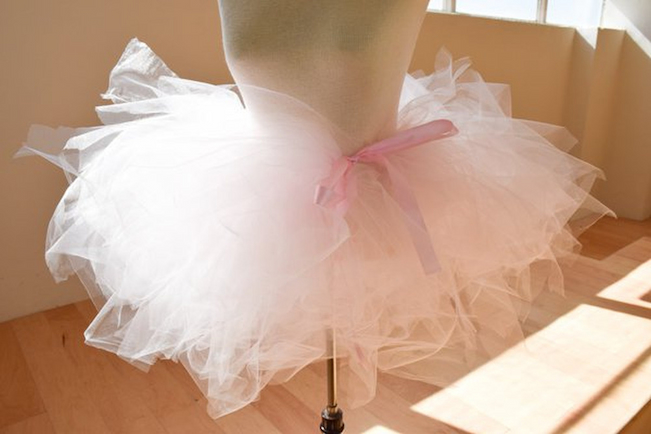The tutu has become the epitome of ballet since it was first introduced to the world by ballet dancer Marie Taglioni in 1832. This magical piece of clothing is typically worn by female dancers and is available in two styles: a tutu skirt and a tutu with an attached bodice. The tutu helps the ballet instructor see the lines and body movements of the dancer and can help them dance safely and correctly.
Ballet Tutu Styles
Tutus are constructed of tulle, a thin, net-like fabric, and a skirt of any kind with multiple layers. Tulle comes in a variety of textures, including stiff and delicate types that fold in graceful, airy waves. The professional adult ballet tutu is designed to remain rigid throughout the movement; however, some styles will require some assistance.

Romantic Tutu
The romantic tutu is the original tutu, constructed of three to five layers of tulle and trimmed anywhere between the knee and the ankle. The principal goal of this tutu design is to emphasise airiness. There are two styles of romantic tutus available today. The first style starts at the waist, while the second starts at the hip and is frequently referred to as a romantic tutu with Basque.
Classical Tutu
Tutus were cut above the knee in the late 1800s to expose the difficult ballet footwork and allow ballerinas to move more freely and gracefully on stage as pointe work became more sophisticated. That is how the classical tutu entered the globe. Nowadays, there are four different styles of classical tutus available.
Pancake Tutu
A pancake tutu is normally short, comes straight out of the hips and has several layers of tulle and net. These layers are held together by a wired hoop implanted between them, allowing the tutu to bounce when the ballerina completes a movement. The pancake tutu is frequently created on a pair of briefs to provide a seamless effect and to keep it from slipping.

Platter Tutu
A platter tutu is short and sticks out from the dancer’s waist, similar to a pancake tutu. The fundamental distinction is that a plate tutu lacks pleats, but a pancake tutu has the top layer embellished.
Bell Tutu
This famous tutu style that appears in many Degas paintings is short, rigid, and constructed of several layers of netting that all come down to the same length. Because the layers of mesh are not held by a hoop, they fall in a bell form.
Powder-Puff Tutu
A powder-puff tutu is shorter and does not protrude as far as a pancake or platter tutu. It contains several layers of netting but no wired hoop. Its design makes the tutu appear softer and fuller, and it glides freely with the dancer.
The Anatomy of a Tutu

The Bodice
Tutu’s bodice has corset-style and shoulder straps. It must follow every step the dancer takes and fit like a glove. To take advantage of the fabric’s stretchiness, the designers and seamstresses cut the side pieces on the bias.
The Basque
The Basque is the section of the dancer’s costume that runs from the waist to the crotch and resembles a pair of panties. While it’s separate from the bodice, it’s made of the same fabric as the bodice. It’s divided into two parts: upper and lower. The upper Basque is visible from the waist to the hips, while the lower Basque is the underwear component and serves as the foundation for the layers of tulle and net. Tulle is applied layer by layer to each section of the Basque before being sewed together.
The Frills
An adult ballet tutu typically contains 12 layers of frills, with some reaching up to 16 layers for added fullness. The hoop is normally placed in an 8th-layer casing. The dancer’s height determines the length of the tutu. To ensure that the tutu’s layers are placed exactly on the Basque, they have been attached 15 mm apart. Dressmakers use a ruler and an L-square to trace the lines on the Basque to ensure the layers are sewn straight. The layers should be shorter in length, from the longest at the top to the shortest at the very bottom, to allow the tutu to be self-supported.
The Complex Process of Making a Tutu
Unlike modern dance clothing, the process of making an adult tutu is difficult and time-consuming. A team may work around the clock, cutting, hand stitching, and rushing dozens of tutus for the production. The simplest tutu, only the skirt, takes roughly 20 hours to make. A tutu can take anywhere from 40 to 60 hours to complete with decorations. Moreover, making a tutu requires a lot of handwork because many things cannot be done by machine. For instance, designers will manually sew two inches long catches to hold the tulle together, so it’s not sewn flat but has room to move between the threads.

Ballet Tutus: Interesting Facts
Dancers avoid wearing tutus in ballet classes- due to their high cost and delicate structure; tutu costumes are reserved solely for performances and rehearsals. A rehearsal tutu is used to assist dancers in adjusting to their partners and the area around them. Moreover, with a corset-like fit and yards of fabric that isn’t always exceptionally soft, don’t expect the tutu costume to provide the comfort of an elastic, Lycra-like material. Instead, the lower Basque is used as a practice tutu.
Tutus aren’t washable- Tutus must be disassembled before cleaning because of the labour spent in attaching delicate net and festooning with sparkling jewellery, beads, and feathers. Even yet, only the bodice may be cleaned, and due to the complexities involved, most dancers resort to spot cleaning, preferably with vodka! Spraying a vodka-water mixture extensively on the affected area eliminates scents and kills odour-causing microorganisms.
Tutu’s size is adjustable- Because tutu costumes are so expensive to produce, dance companies ensure the costume fits more than one dancer. Rows of hooks and bars are sewn down the back of the tutu’s bodice to allow dancers of various sizes to wear the same costume.
























